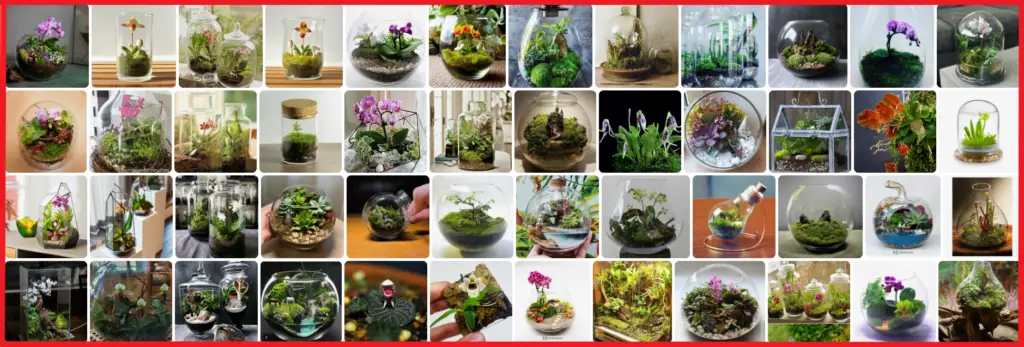
Are you ready to dive into the fascinating world of indoor succulent gardens? Let’s embark on a journey where you will discover the secrets to creating and maintaining a stunning oasis of these unique plants right in your own home. From selecting the perfect succulents to understanding their lighting and watering needs, this ultimate guide has got you covered every step of the way.
Choosing the Right Succulents
When it comes to choosing the right succulents for your indoor garden, there are a few key factors to consider. Succulents come in a wide variety of shapes, sizes, and colors, so it’s important to select ones that not only appeal to your aesthetic preferences but also thrive in indoor conditions.
Here are some tips to help you make the best choices:
- Consider the lighting: Some succulents prefer bright, direct light, while others can thrive in lower light conditions. Make sure to match the light requirements of the succulents with the available light in your indoor space.
- Think about the space: Take into account the size of the succulents and how much space they will need to grow. Some succulents stay small and compact, making them ideal for small containers or terrariums.
- Check the water needs: Different succulents have varying water requirements. If you tend to forget to water your plants, opt for drought-tolerant varieties that can withstand periods of neglect.
By considering these factors and doing a bit of research on the specific succulents you’re interested in, you can create a beautiful and thriving indoor succulent garden that will bring a touch of nature into your home.
Loading... Seconds Left for
Miniature Orchid Terrarium Gallery!

Container Selection and Design
When it comes to creating a visually appealing indoor succulent garden, selecting the right containers and designing the layout play a crucial role in the overall aesthetic. The containers you choose should not only complement the beauty of the succulents but also provide adequate drainage to prevent root rot. Consider various container options such as terracotta pots, ceramic planters, glass containers, or even unique repurposed items like teacups or mason jars.
To design a stunning indoor succulent arrangement, think about the size and shape of the containers in relation to the types of succulents you have.
Mix and match different container sizes to create depth and interest..
Additionally, consider the color and texture of the containers to enhance the overall look of your garden. You can also group containers together to create a cohesive display or use a single statement piece as a focal point.
When it comes to indoor succulent gardens, lighting is a crucial factor for their health and growth. Succulents typically thrive in bright, indirect light, so it’s essential to provide them with adequate sunlight to ensure their well-being.
Here are some key to consider for your indoor succulent garden:
- Placement: Choose a sunny spot near a window where your succulents can receive 6-8 hours of sunlight daily.
- Indirect Light: Avoid placing succulents in direct sunlight for extended periods as it can cause sunburn and damage their leaves.
- Artificial Lighting: If natural light is limited, consider using grow lights to supplement light for your succulents.
- Rotate: To ensure even growth, rotate your succulents regularly so all sides receive adequate light.
By un
derstanding and meeting the of your indoor succulent garden, you can promote healthy growth and vibrant colors in your plants, creating a stunning and thriving indoor oasis.

Watering and Maintenance
When it comes to watering and maintenance of your indoor succulent garden, it’s crucial to strike the right balance to ensure the health and vibrancy of your plants. Overwatering can be just as harmful as underwatering for succulents, so it’s essential to understand the specific needs of these unique plants.
Here are so
me key tips for watering and maintaining your indoor succulent garden:
- Watering Frequency: Succulents generally prefer infrequent but deep watering. Allow the soil to dry out completely between waterings to prevent root rot.
- Watering Technique: When watering, make sure to water the soil directly at the base of the plant, avoiding getting water on the leaves to prevent rot and fungal issues.
- Soil Type: Use well-draining soil specifically designed for succulents to prevent waterlogged roots.
- Monitoring: Keep an eye on your succulents and adjust your watering schedule based on the season and the individual needs of each plant.
- Maintenance: Regularly inspect your plants for any signs of pests, disease, or overgrowth. Prune dead leaves or stems to promote healthy growth.
![]()
decoding="async" src="https://plantandseedguide.com/wp-content/uploads/2024/04/the-ultimate-guide-to-indoor-succulent-gardens_5.png" alt="Propagation Techniques" />
Propagation Techniques
Propagation techniques are essential for expanding your indoor succulent garden collection.
By learning how to propagate succulents through various methods, you can increase the diversity of your garden and create a thriving ecosystem..
One common method is leaf cuttings, where you carefully remove a healthy leaf from the parent plant and allow it to dry before planting it in soil. Another technique is stem cuttings, where you cut a piece of the stem and let it callous before planting. Additionally, offsets are small plantlets that grow at the base of the parent plant, which can be separated and planted independently to grow into new succulents. These propagation methods are simple yet effective ways to multiply your indoor garden’s beauty.




